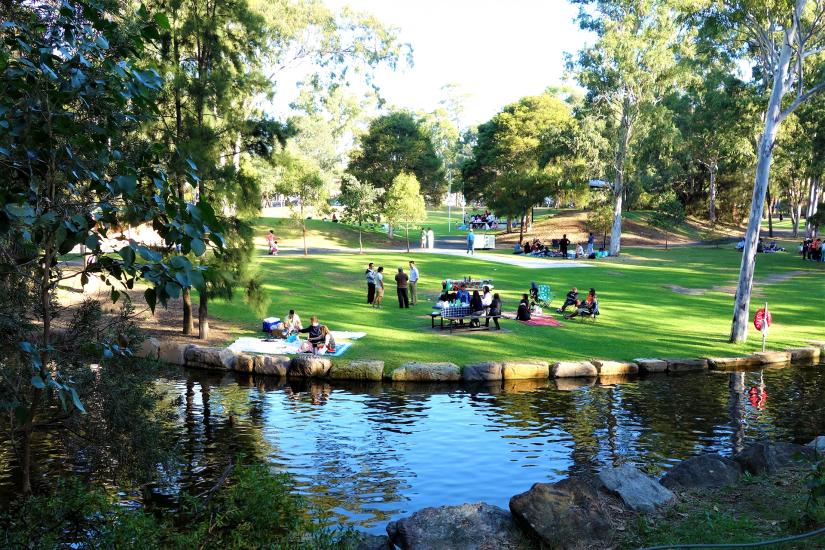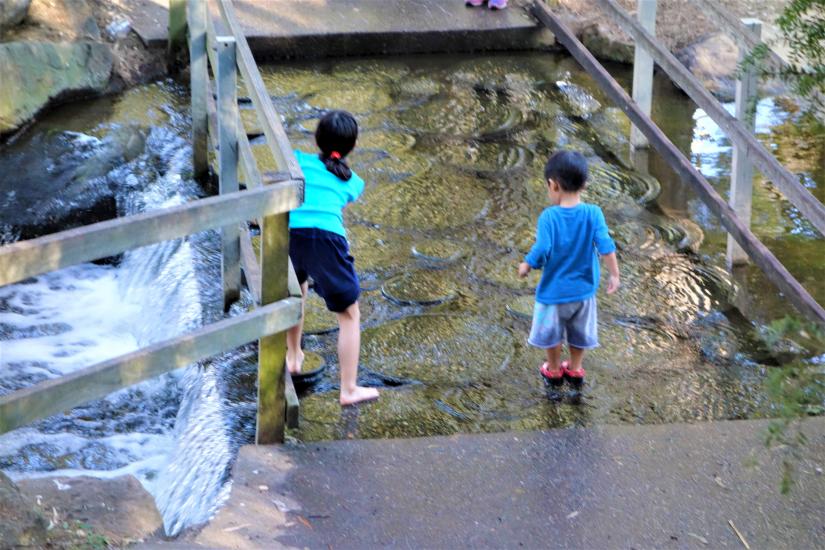On a Saturday in January 2020, the Sydney suburb of Penrith achieved a dubious honour: at 49.9 degrees Celsius, it was the hottest place on earth. It’s the latest in a series of devastating heat records for Western Sydney – and as global warming intensifies, climate scientists advise that it’s only going to get worse.
But some help is at hand in the form of Cooling the Commons, a research program led by the UTS School of Design and Western Sydney University working with a range of government and not-for-profit partners. The project invites urban planning and development professionals and local communities to co-design practices and infrastructures to mitigate urban heat in public spaces.
When we’re thinking about commons, we’re thinking about the spaces in the city that we share, but we’re also thinking about the kinds of resources and knowledges and infrastructures that enable access to them during periods of extreme heat. – Associate Professor Abby Mellick Lopes, senior researcher and Director of Postgraduate Design Studies at UTS.

The bigger picture of urban heat
The research is based on a concept called pattern thinking, which identifies the repeated behaviours people are likely to engage in within a particular designed environment. By interrogating these patterns, researchers can create interlinked design interventions that reinforce positive patterns or mitigate problem patterns.
A problem pattern might be a lack of publicly accessible water for play, drinking and cooling, resulting in increased plastic waste as a result of people drinking out of disposable bottles or reduced physical and social activity for residents during heatwaves.
Solutions might include the installation of bubblers and cooling water features – like splash pools and misting features – for public use. Interlinked interventions would also consider questions of shade and cooling infrastructure for animals, among others, to address the broader problem of urban heat.
Accessible water is just one of more than 40 patterns now available for use by local planners, developers, educators, community liaison officers, council workers and communities on the Cooling the Commons website. Other patterns include night-time commons, pedestrian cycling linkages, and selecting shade trees for public spaces.
In a recent press release, government developer Landcom pointed to the patterns’ potential to positively impact the community. Landcom is one of the partners implementing the Cooling the Commons patterns,
Integrating such patterns into a site or precinct design can have a marked effect on the liveability of a community. – Lauren Kajewski, Landcom’s Director of Sustainability and Learning.

Sustainability patterns are part of design
Cooling the Commons emphasises the potential of design as a tool to respond to global challenges, such as reducing crime, addressing inequality and designing more inclusive cities – and at UTS, it’s par for the course. Researchers in the School of Design are leading the way in the development of big-picture design solutions that have the potential to shape the way we live.
But it’s not just researchers applying design methodologies to real-world challenges – postgraduate design students are, too. In part, this is a result of the School of Design’s postgraduate course curriculum being informed and delivered by the school’s world-renowned researchers.
As a result, postgraduate course content brings students face-to-face with the importance of design in responding to our urban, climate and social futures. And there’s a good reason why designers – and future designers – are uniquely positioned to drive this sort of change:
Our world is increasingly and intensively designed. I think that what designers bring is a powerful way of interrogating the role of design in our everyday environments and then being very strategic about the sorts of changes and amendments we can make to those contexts to afford and enable more positive ways of living. – Abby Mellick Lopes
Want to learn more about using design to lead positive change? There’s a range of new postgraduate design degrees available at UTS.

